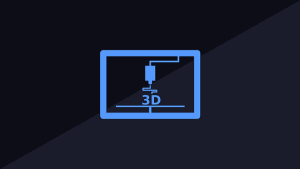Do you know how metal 3D printers, like the ones used by several modern industries use? If not, do not worry, you are not alone. However, learning more about metal, 3D printing, and post processing for 3D printing is essential if you work in a field where these services are needed or used.

Getting to Know the Basics
The question is – how do metal 3D printers work? What are the main benefits and are there any limitations? Keep reading to learn how 3D metal printing is used in several industries today. You can also learn more about the basic mechanics of the metal 3D printing process.
Metal 3D Printers vs. Traditional 3D Printers
Metal 3D printers are like other 3D printing methods used today. For example, metal 3D printers will create the desired part by layering material. The actual printing process only adds a single layer at once based on the digital 3D design – this is why it is often referred to as “additive manufacturing.”
With this process, parts can be built using geometries that are virtually impossible to manufacture with more “traditional” subtractive (i.e., CNC machining) or even formative (i.e., Metal casting) technology. Also, with this method, there is no need for any specialized tooling, such as a mold, which is necessary with other manufacturing processes.
From this point, the specific steps that a metal 3D printer follows for manufacturing different parts and components vary based on the technology being used. A brief overview of some options is found below.
Power Bed Fusion
With this, high-power lasers (found in DMLS/SLM) or electron beams (found in EBM) are used for selectively bonding metal powder particles to one another. This occurs one layer at a time, which forms the metal part of the component.
Binder Jetting
With this process, metal powder particles are then bound to each other using an adhesive layer-by-layer process. This creates a “green” part that must be thermally post-processed, also called sintered, to fully remove the binder and create the all-metal part.
Metal Material Extrusion
A rod or filament including a polymer and that is heavily loaded using metal powder is sent through a nozzle to create the “green” part. However, before the full metal part is ready, it must be post-processed (debonded and sintered as mentioned above). This helps to create the all-metal component.
Direct Energy Deposition
Wire or metal powder is melted using a high energy source. Then it is selectively added one layer at a time.
Understanding the Process
As you can see, there are an array of methods in place when it comes to metal 3D printing. Understanding more about how this works will help you see how far technology has come and what types of manufacturing methods are used today. Being informed can also help you determine if this method of manufacturing would be a good option for your product.






